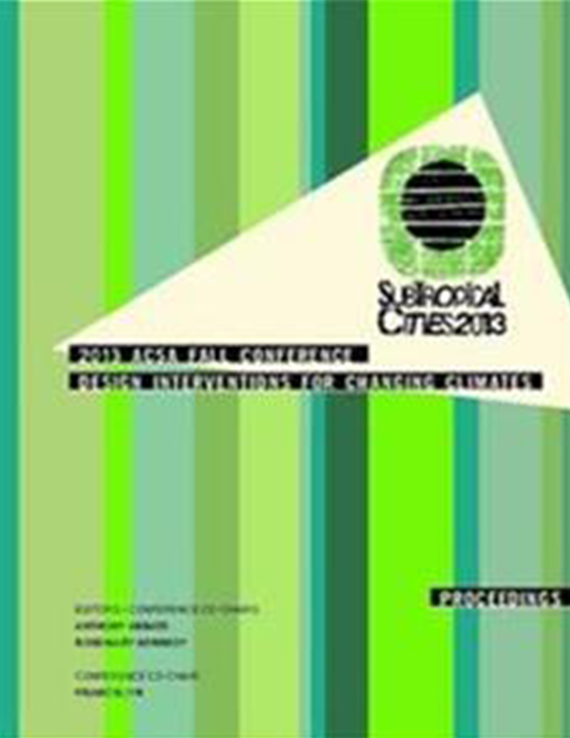Author(s): Damon Caldwell
As global society barrels forward into a future of pervasive climate change and potential upheaval, architecture will confront the notion of more and more sites existing as sub-tropic environments. Coupled with increases in population numbers and densities, radical proposals for urbanism and urban ecology are re-emerging as a serious arena of speculation in architectural discourse and education in the form of new hyper-structures. Their often explicit environmental infrastructure accepts a new notion of city existing in a wetter, warmer future.Progressive urban solutions to man’s relationship with the larger environment have flourished previously in architectural history. Economic, technological, and political skepticism during the 1960’s and 70’s led to many visionary utopian and dystopian speculations, across a wide range of cultural and engineering feasibility. The works of Archigram, the Metabolists, Yona Friedman, and others serve as exemplars for the variety of communalist ideas of this time. Much of this design work was branded as too heroic for the idiosyncrasies and excesses of late twentieth century existence, but now have potential utility as seeds of future urbanity. This paper seeks to examine current hyper-structure proposals and trends in a parallel comparative framework with mid-20th century urban mega-proposals. The Evolo competition and works of Vincent Callebaut, Rem Koolhaas, and others serve as exemplars for modern revolutionary urbanism in the face of tropic and sub-tropic expansion.By examining the explicit and implicit assumptions and strategies embedded in these proposals, a greater understanding of new versus resurfacing ideas emerges. Lines of comparison include: utilization of difficult sites and the impact on resources; integration with vs. separation from nature and site; building in a garden vs. building as garden; formal and qualitative implications of individuality vs. community; industrial vs. biomimetic technology and structure; and centralizing (water, energy, food) resource production and recycling. The resulting investigation establishes critical lenses of evaluation for new notions of urban density, based upon their potential architectural, cultural, and environmental prerequisites, utilities, and implications.Learning from the PastPresentation Session
Volume Editors
Anthony Abbate, Francis Lyn & Rosemary Kennedy
ISBN
978-0-935502-90-9

 Study Architecture
Study Architecture  ProPEL
ProPEL 
